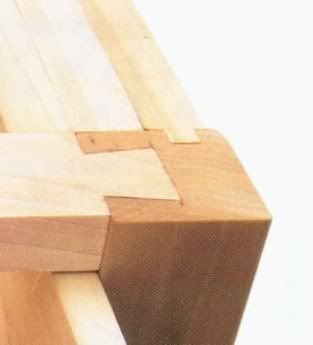dchallender
Established Member
Well I'm designing a large farmhouse kitchen table for my house, it will be of traditional style with a thick pine top with drawers underneath for cutlery etc. and I need a bit of advise on the construction. As I see it I have two options available to me.
The first is do I go down the traditional route of mortise and tenon joints with dowels (which appeals to my inner wood worker!! ) or I should I use a mechanical fixing (which the engineer in me tells me to use :? )such as the below link
) or I should I use a mechanical fixing (which the engineer in me tells me to use :? )such as the below link
http://www.bkservicesonline.co.uk/shop/index.php?main_page=product_info&products_id=11656
As I know a lot of you guys do this professionally I thought I would ask what is the best method of construction before I jump in and start cutting wood.
Which ever way I eventually go down I will remember to photograph it this time as I always forget !!
Any advise greatly appreciated as always
rgds
Darren
The first is do I go down the traditional route of mortise and tenon joints with dowels (which appeals to my inner wood worker!!
http://www.bkservicesonline.co.uk/shop/index.php?main_page=product_info&products_id=11656
As I know a lot of you guys do this professionally I thought I would ask what is the best method of construction before I jump in and start cutting wood.
Which ever way I eventually go down I will remember to photograph it this time as I always forget !!
Any advise greatly appreciated as always
rgds
Darren





